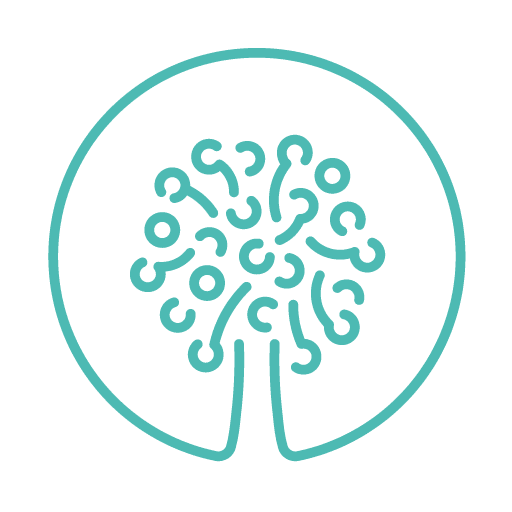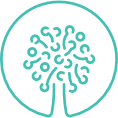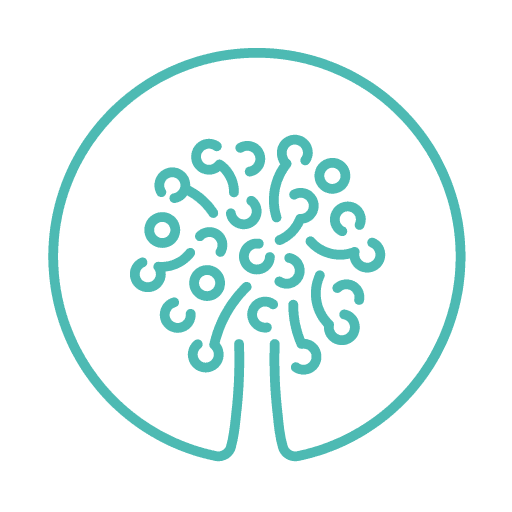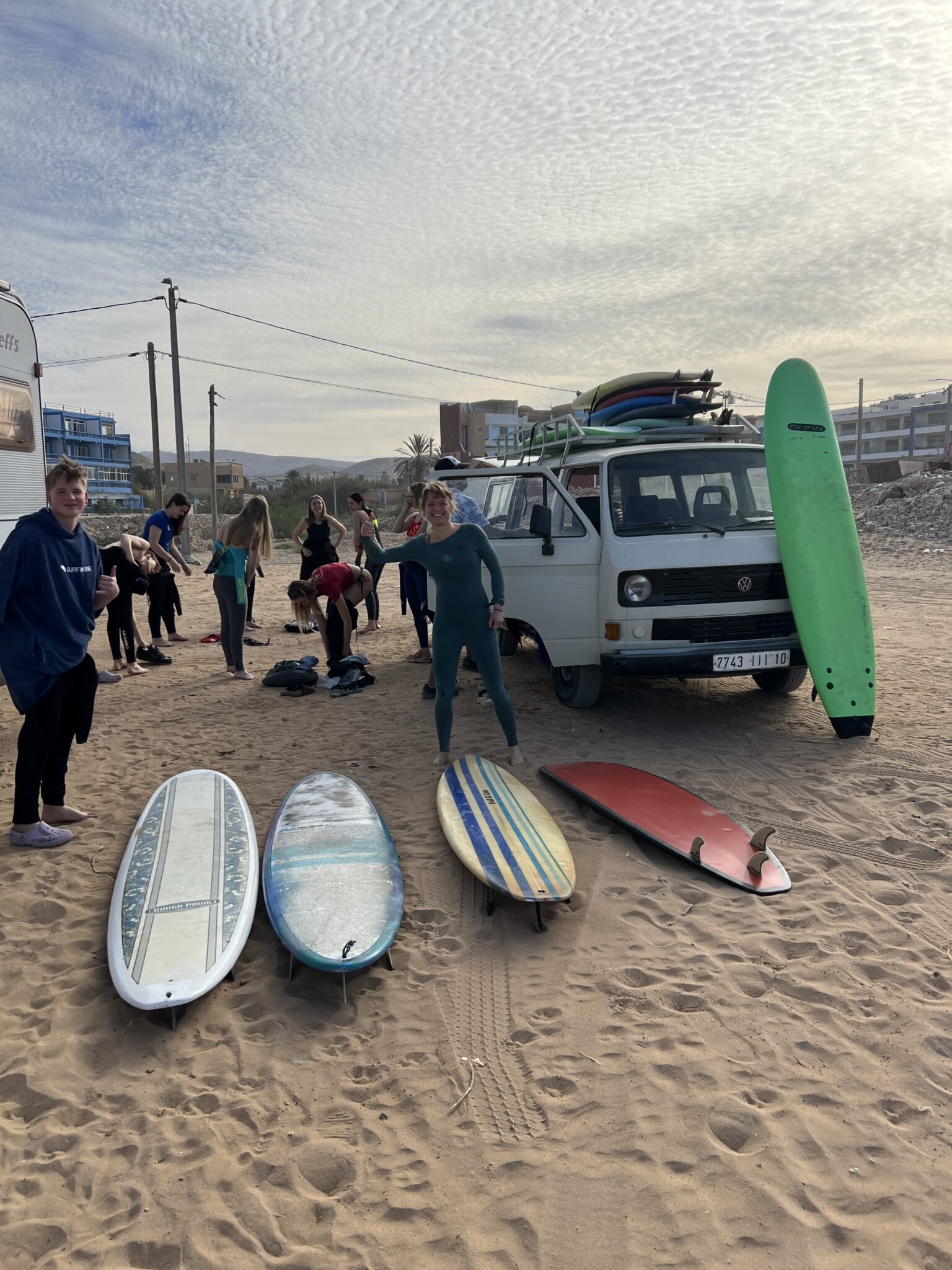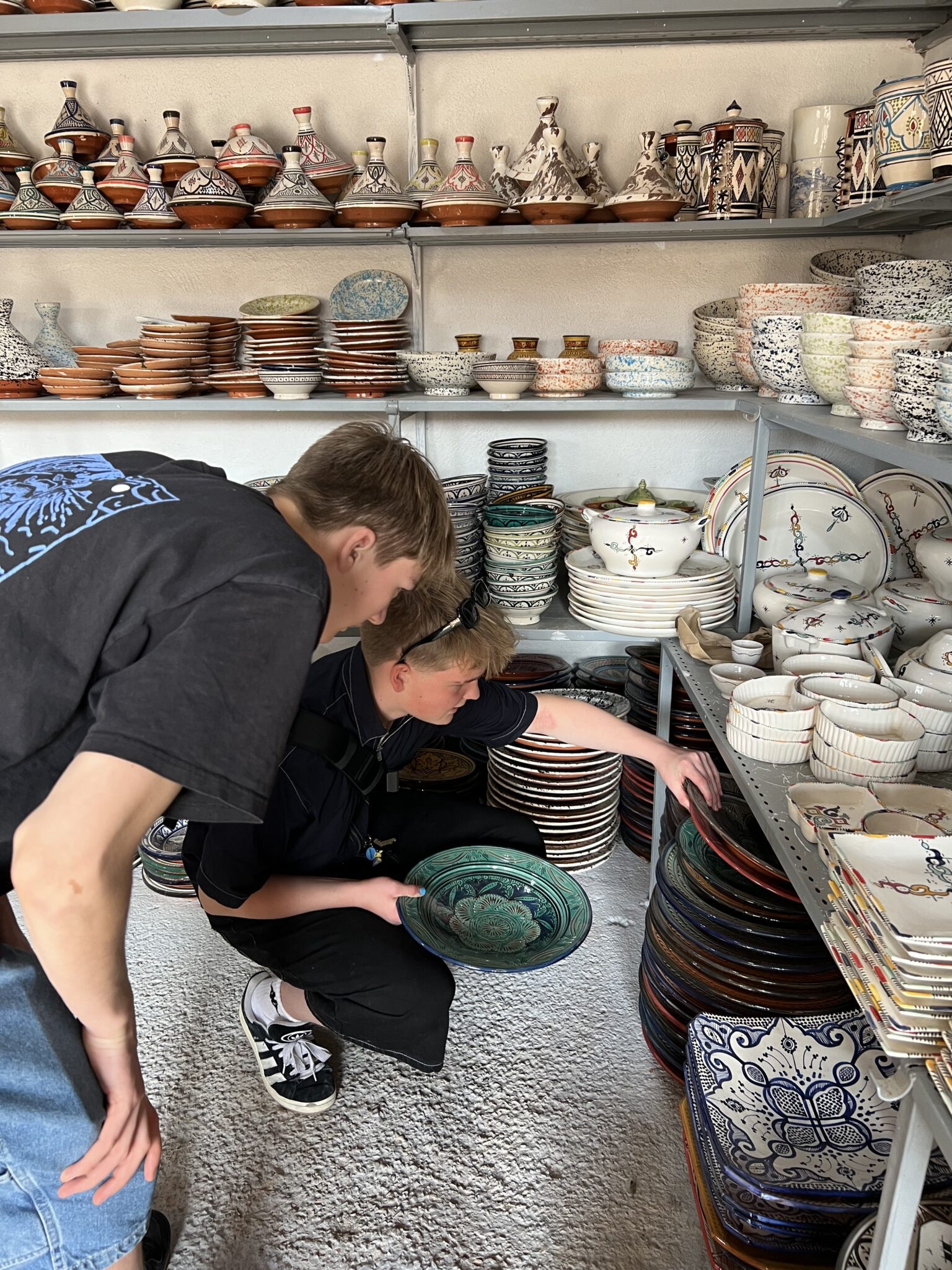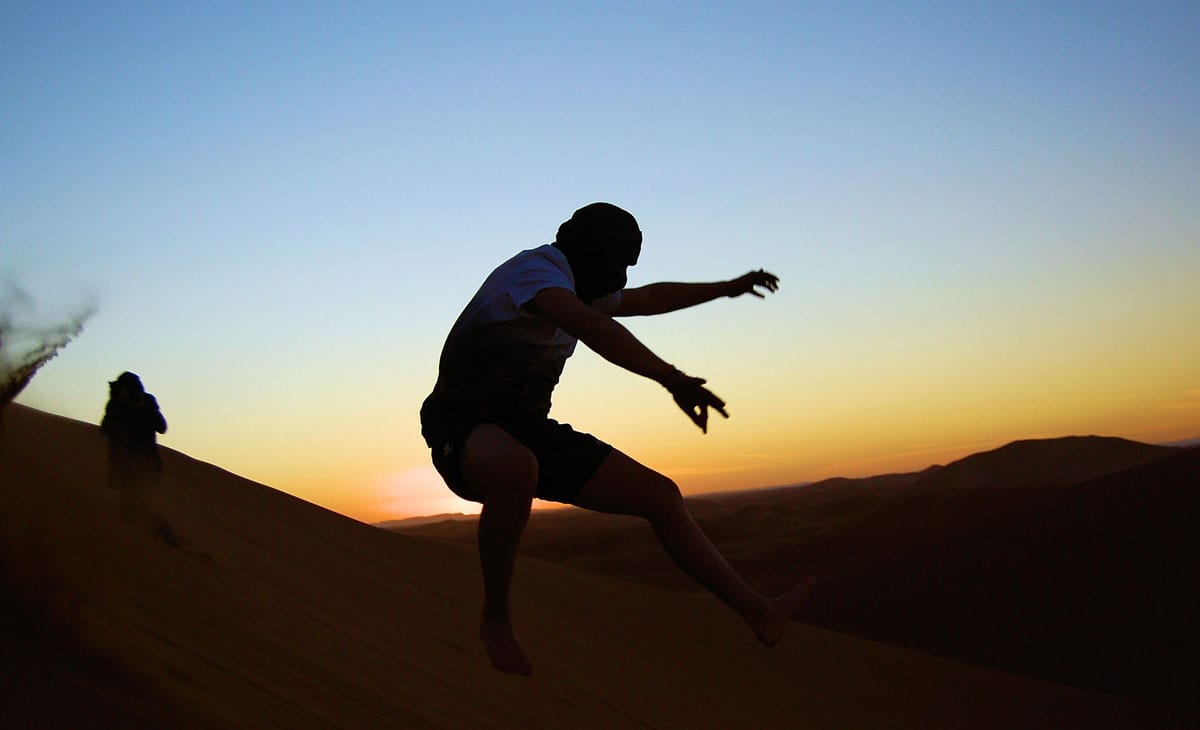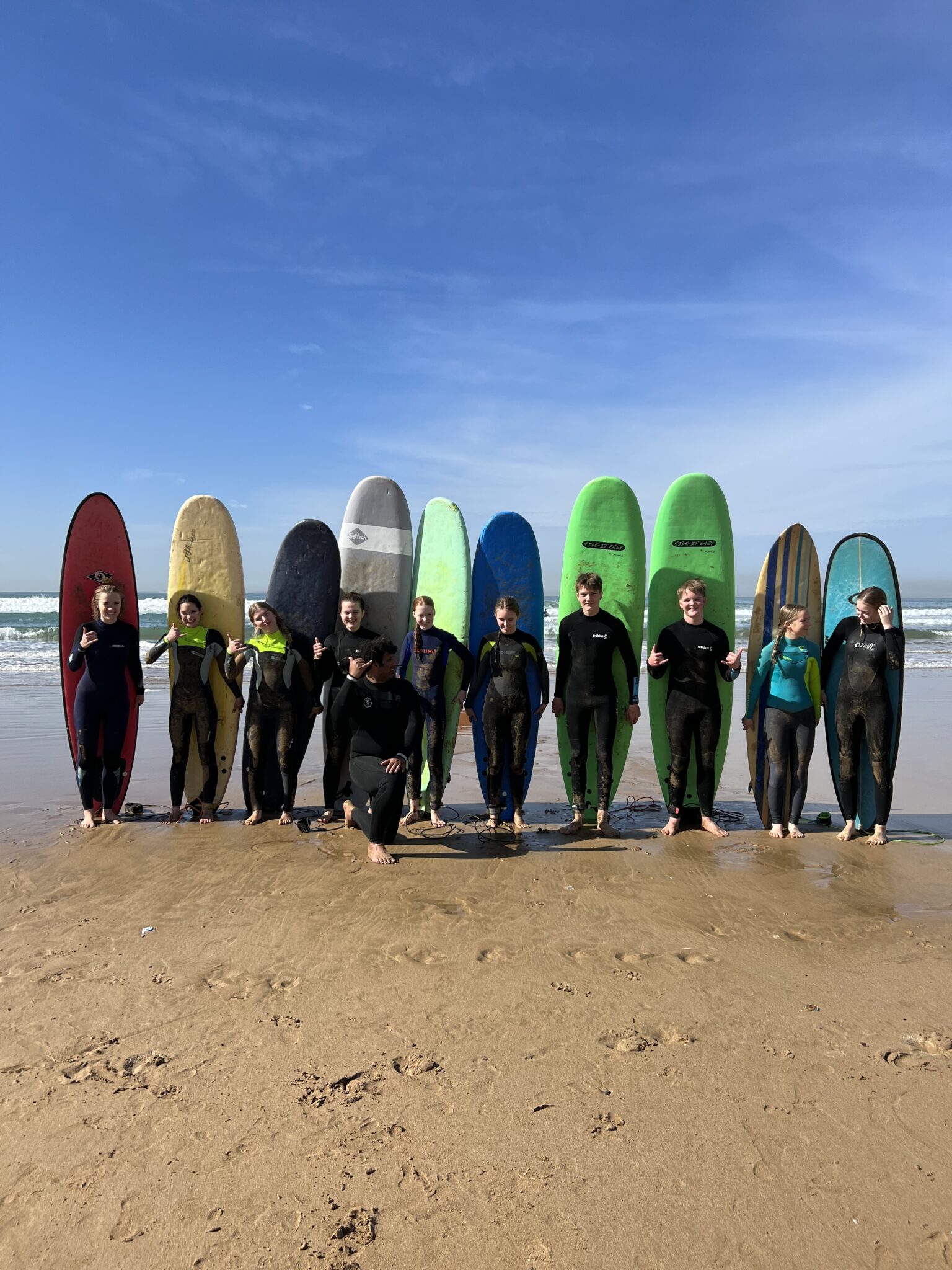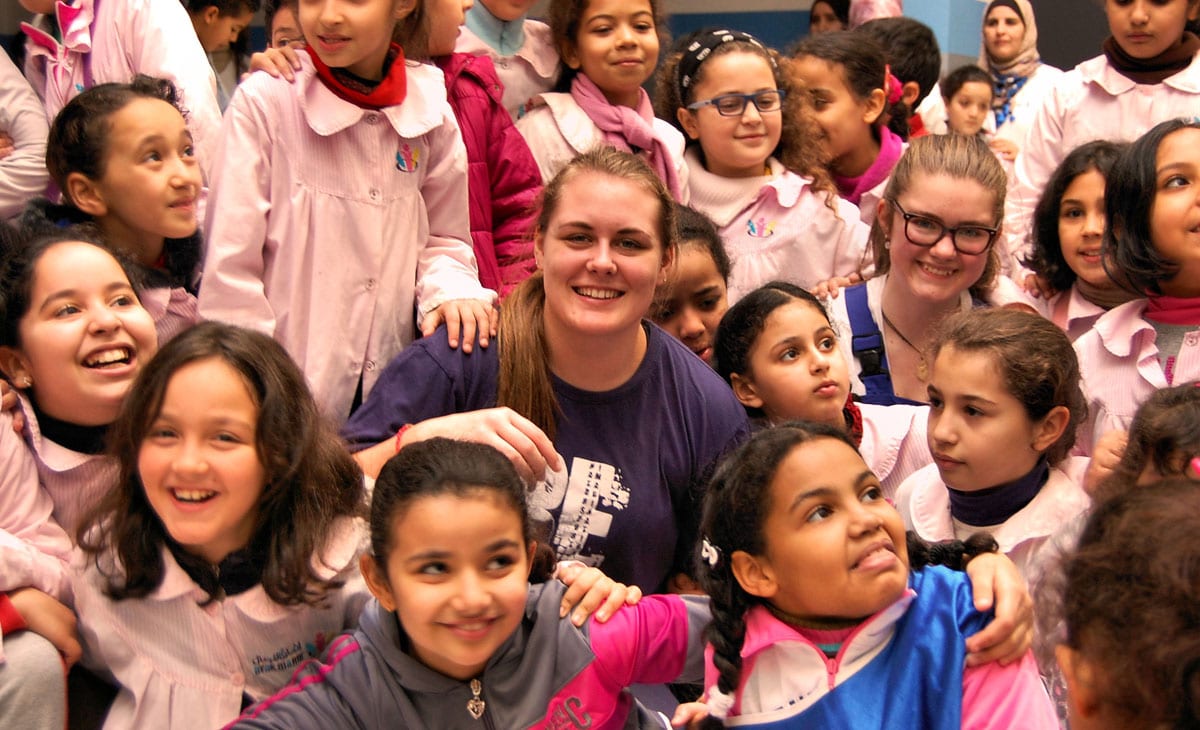
Category
Previous Cultural subjectsMorocco - Surf and culture.
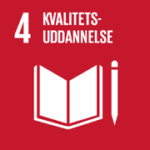
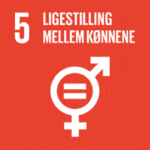
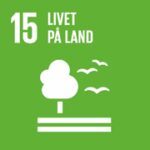
Morocco is a fascinating North African country with a rich culture and varied nature. To the north-east are the beautiful Atlas Mountains, which stretch across the country, offering hiking trails and traditional Berber villages. To the south is the vast Sahara desert with its iconic sand dunes and dramatic landscapes. The city of Marrakesh is known for its bustling medina, colourful markets and historic palaces. Morocco's long Atlantic coastline offers popular surfing destinations like Taghazout, which attracts surfers from all over the world.
Academic programmes
Before we leave for Morocco, the classes at the school will give us a foundation for understanding and experiencing the culture and history of the country.
The teaching is based on the students' cultural self-understanding so that they can put their own culture into words and become curious about Moroccan history, life and culture.
One of the most important goals in cultural education about Morocco is how to create equal cultural encounters. While travelling, we will meet people who have chosen to live in different places and with different economic and cultural norms, so it's important that students abandon an ethnocentric view of culture so that the encounters in Morocco are based on equality.
The travelling period is during Ramadan, the Muslim month of fasting and purification - one of the five pillars of Islam. Naturally, we will work with this and try it out ourselves on the journey.
In addition to the above-mentioned focus on culture and humanity, the cultural education programme to Morocco will target SDG 4: Quality Education. SDG 5: Gender Equality, and SDG 14: Life on Land. Students will create their own projects within these goals. Back at school, they will acquire knowledge about the goals and, among other things, acquire and work with their own knowledge and prejudices in relation to these topics. While travelling, the students will encounter the Moroccan reality, which will probably refine the students' world view.
To get closer to the arts and crafts of the country, we might work with ceramics. However, we will definitely try our hand at creating Moroccan-inspired designs that we can compare to the beautiful pieces we will experience down there.
Other activities that are within the scope of the course: Moroccan cookery and classic Moroccan dishes, and we might even take up surfing in the cold Danish North Sea to get ready for the waves on the Moroccan coast.
TRAVEL
Marrakesh
We start our journey in the ancient royal city of Marrakesh. Marrakesh is the epitome of the Arabian Nights. The medina is the old city centre and has more than 1000 years of history behind it. It is surrounded by a 17 km long reddish clay-coloured city wall - hence the name “The Red City”, and around it is the newer part built by the French during colonial times, with the well-known French wide boulevards and green parks.
Here we will stay two nights at a riad located inside the medina, which is the old city centre.
In Marrakesh, we'll go on a fantastic historical walking tour of both the old and the new city. We end our tour at the Djeema El Fna Square, a UNESCO World Heritage Site. The name of the square means “square of the dead”, as until about 100 years ago it was a public place of execution. Today, the square is a showcase for centuries of local customs. Snake charmers, fortune tellers, belly dancers, jugglers, musicians, tooth extractors, medicine men are among some of the things you can experience here alongside all the food stalls. The square also opens into the souk, which with over 4000 shops is the largest in North Africa.
In addition, we have been working on setting up a meeting with some Moroccan youth.
Berber villages in the Atlas Mountains
After breakfast at our riad in Marrakesh, we'll be picked up by a bus and begin the beautiful drive into the Atlas Mountains. The hike lasts approximately 1 hour until we reach the bottom of the Atlas Mountains. From here we will hike about 10 kilometres over a mountain pass to the village where we will stay in dormitories in the families' homes. Here we will eat and sleep with a Berber family who have a dormitory/guesthouse on top of their home.
We spend three days in the mountains and end up in the city of Imlil (Gateway to the Atlas Mountains) in the mountains we will really come face to face with the three SDGs: Quality Education, Gender Equality, and Life on Land. We meet with locals who show and tell us about their families, agriculture and natural resources. We experience how they live and have the opportunity for good conversation while walking through beautiful mountain landscapes and small Berber villages.
We round off our trip in the mountains by meeting some local young people for our students to talk to and mirror themselves in. Then we grab some lunch and hop on the bus, where a long bus ride allows us to digest some of the many impressions from the mountains.
Sahara
After breakfast, we drive the final stretch south to M'Hamid, where the tarmac road ends. From here, we rely on our jeeps to take us into the varied and stunning landscapes of the desert.
We pass oases where birds, dromedaries, desert foxes and gazelles come to drink water. As we drive, we're likely to hit part of the ”Dakar Rally” track, and we might see a mirage - not uncommon in these parts.
Out in the Sahara, we will experience how the weather conditions change - sometimes quite rapidly - and how this affects life out there. In the Sahara desert, it is also a goal that students meet the people who choose life in the desert and that students reflect on (the positive aspects of) this life.
We will enjoy the huge starry sky with no disturbing lights and the fire crackling in the otherwise noisy silence. We spend the night in a Bedouin camp. In the morning we get up early to watch the sunrise. Here, countless tracks in the sand will reveal how many animals live in the desert.
Atlantic coast - Tamraght
After a few days in the north-westernmost Sahara, the journey continues to the Atlantic Ocean. Here we will meet a completely different world, a tourist world, with tourist facilities and tourist offers - every western investor's dream case. Our host in Tamraght is a wonderful man who the school has worked with for the past 10-12 years. He has experienced first-hand the effect the development has had on his city and is happy to talk honestly about it.
With a critical eye on tourism, we will round off the trip by spending the last four days surfing and experiencing coastal city life. Hopefully there will be an opportunity to visit an argan oil farm and crack the nuts ourselves. We'll get some history and a guided tour. The Agadir region is one of only two places in the world where argan oil products are produced by hand. Finally, we also expect to visit a pottery workshop where a potter will show us some of his techniques and maybe try out some of the things we've been working on at home.
VACCINES
Hepatitis A and tetanus
SAFETY
You will all be given a sticker with emergency numbers in the country, the phone numbers of the teachers and efterskolen's phone number. It is also a rule that you only move around in larger groups while travelling. For more information about safety, see the document Safety instructions for travelling to Morocco.
ECONOMY
Self-payment for the journey 12000 DKK
TEACHERS
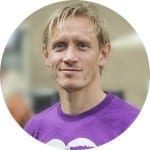 |
|
| Kim Glerup km@ranumefterskole.dk |


